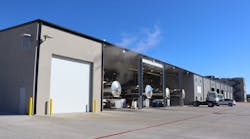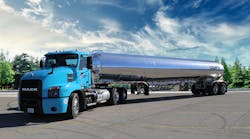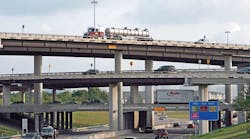In order for the trucking industry to deliver goods and materials throughout the United States, the nearly 4 million miles of public roadways in the United States must be properly maintained and improved. For the trucking industry, roads are a common denominator, so it comes as no surprise that highway infrastructure is included in the Top Ten list of the 2013 TII Survey.
In fact, issues involving transportation infrastructure or funding have been in the Top Ten list since the inception of the TII survey. While a new two-year highway authorization bill was passed in July 2012, several high-profile infrastructure failures have brought the issue of infrastructure quality into the national consciousness.
The latest highway authorization bill, Moving Ahead for Progress in the 21st Century (MAP-21), expires in September 2014, which means that the debate over how to adequately fund transportation infrastructure will be a major topic over the next 12 months.
Proposed Strategies:
a) Advocate for fuel tax increases to efficiently fund the surface transportation system and ensure those funds are not diverted to non-highway projects. The ability of existing fuel tax revenues to adequately fund transportation improvements has been declining due to improvements in fuel economy and stagnant fuel tax rates. As our infrastructure ages and road repairs become more costly, it is necessary to find additional funding to make up for fuel tax shortfalls. Research has demonstrated that the existing fuel tax is an efficient form of taxation, and many in the industry feel that an increase in the fuel tax is the best way to ensure the transportation system is adequately funded. Nearly half (49.7%) of respondents rank this strategy as their top choice.
b) Identify the worst truck bottlenecks as a means for targeting government infrastructure investments. With a finite pool of resources that can be used to improve our infrastructure, many in the industry, including the 28.5% of respondents that rank this strategy first, feel that it is necessary to prioritize where transportation funding is spent. ATRI tracks congestion at 250 freight-significant locations and produces a ranking of those locations as one means to help with investment prioritization.
c) Utilize the congressionally-mandated National Freight Policy and National Freight Network as tools to ensure adequate investment in critical highway infrastructure. As part of the MAP-21 authorization passed in 2012, Congress mandated that the Department of Transportation (DOT) develop a National Freight Policy and National Freight Network to assist with long-term infrastructure planning and investment prioritization.









